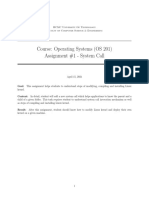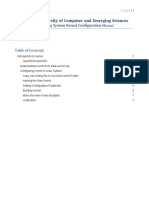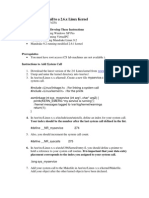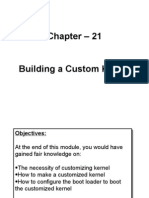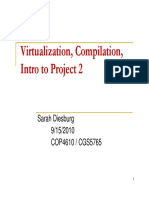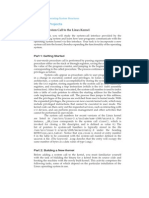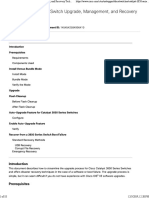0% found this document useful (0 votes)
120 views3 pagesLinux Kernel Project Guide
This document provides instructions for building a custom Linux kernel from source and adding a new system call to the kernel. It outlines the steps to:
1. Download and install kernel development tools. Obtain the source code for the current running kernel and for a new kernel version.
2. Configure and compile the new kernel, create a compressed image, install kernel modules and the new kernel. Modify the GRUB configuration file and reboot with the new kernel.
3. Add a simple "helloworld" system call to the kernel that prints a message to syslog. Implement the system call in the kernel and write a user-level program to test it.
4. Write a C program to create a parent process
Uploaded by
giaphuc2004hgCopyright
© © All Rights Reserved
We take content rights seriously. If you suspect this is your content, claim it here.
Available Formats
Download as PDF, TXT or read online on Scribd
0% found this document useful (0 votes)
120 views3 pagesLinux Kernel Project Guide
This document provides instructions for building a custom Linux kernel from source and adding a new system call to the kernel. It outlines the steps to:
1. Download and install kernel development tools. Obtain the source code for the current running kernel and for a new kernel version.
2. Configure and compile the new kernel, create a compressed image, install kernel modules and the new kernel. Modify the GRUB configuration file and reboot with the new kernel.
3. Add a simple "helloworld" system call to the kernel that prints a message to syslog. Implement the system call in the kernel and write a user-level program to test it.
4. Write a C program to create a parent process
Uploaded by
giaphuc2004hgCopyright
© © All Rights Reserved
We take content rights seriously. If you suspect this is your content, claim it here.
Available Formats
Download as PDF, TXT or read online on Scribd
/ 3









